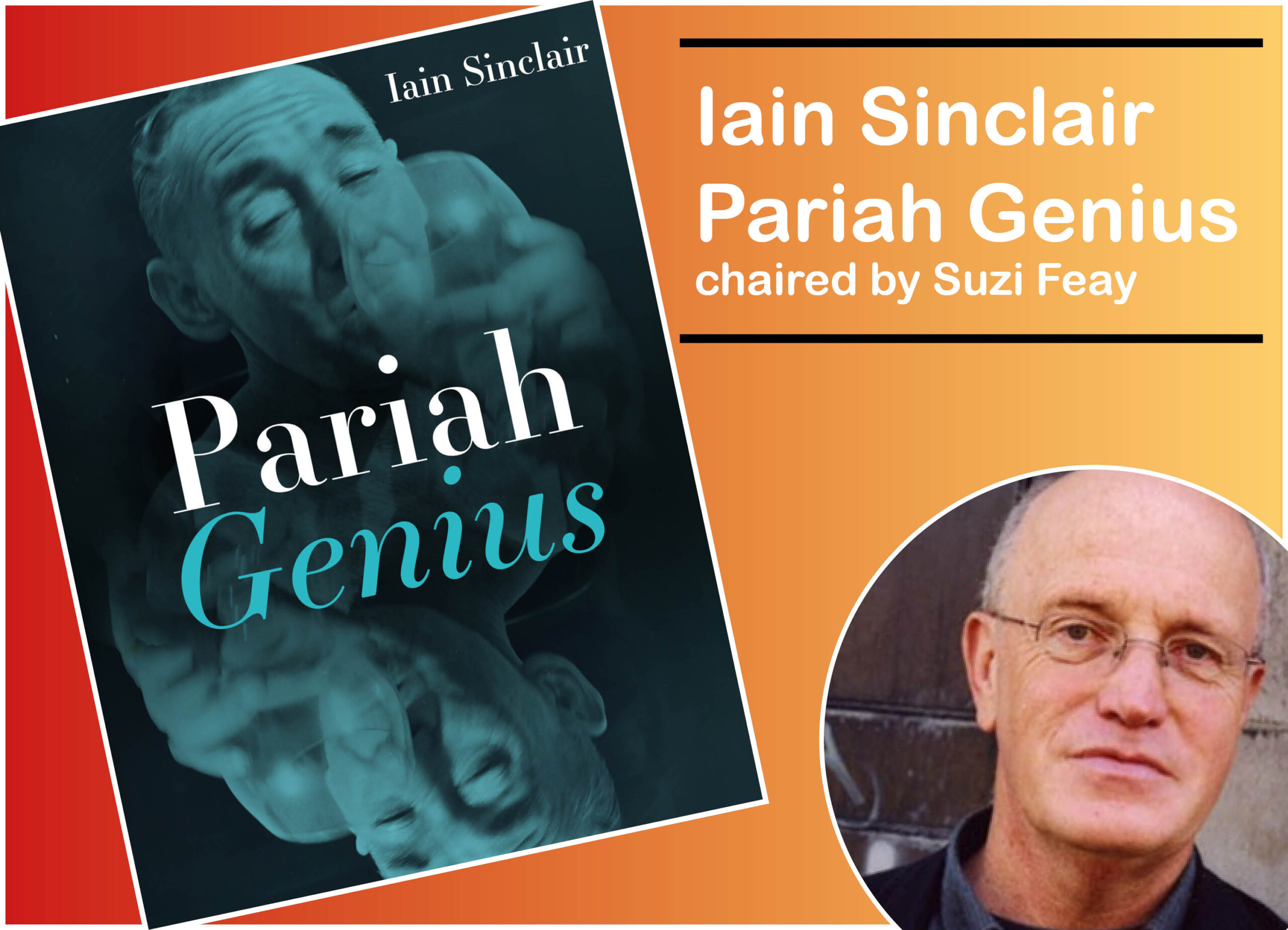Iain Sinclair will be reading from and talking about Pariah Genius, his new fictional biography of photographer John Deakin, in conversation with literary journalist Suzi Feay.
In Pariah Genius, literary giant Iain Sinclair follows in the footsteps of photographer John Deakin, whose chronicles of Soho life – and the world of Francis Bacon and his friends – has so influenced our perception of that generation’s work.
During the Covid lockdown, Iain Sinclair took delivery of two large yellow boxes containing fresh prints of photographs by the master-chronicler of Soho John Deakin who died, obscure and penniless, in a Brighton hotel room in 1972. Sinclair, another master-chronicler of London’s hidden past, uses those and other images and memories (an invaluable catalogue of artists and divas, actors, film producers, criminals and derelicts) – to bring back to life the unique artistic milieu of Bohemian London in the 50s and 60s. What emerges in this psychobiographic fiction is a fascinating portrait of the enigma that was John Deakin. An engaging, utterly unique portrait of a man who some felt was a fallen angel, and others, the devil himself.
Iain Sinclair was born in 1943 in Cardiff, and studied at Trinity College, Dublin, the Courtauld Institute of Art, and the London School of Film Technique. The city of London is central to his work, and his books tell a psychogeography of London involving characters including Jack the Ripper, Count Dracula and Arthur Conan Doyle. His non-fiction works include Lights Out for the Territory: 9 Excursions in the Secret History of London (1997); London Orbital: A Walk Around the M25 (2002); and Edge of the Orison (2005), a reconstruction of the poet John Clare’s walk from Epping Forest to Helpston, near Peterborough. His novels include Downriver (1991), which tells of a UK under the rule of ‘The Widow’, a grotesque version of Margaret Thatcher; Landor’s Tower (2001); White Goods (2002); and Dining on Stones (2004). Iain Sinclair lives in Hackney, East London.

